6 Amazing Tourist Attraction To Visit In Hampi
By: Priyanka Maheshwari Tue, 26 Sept 2023 6:46:37
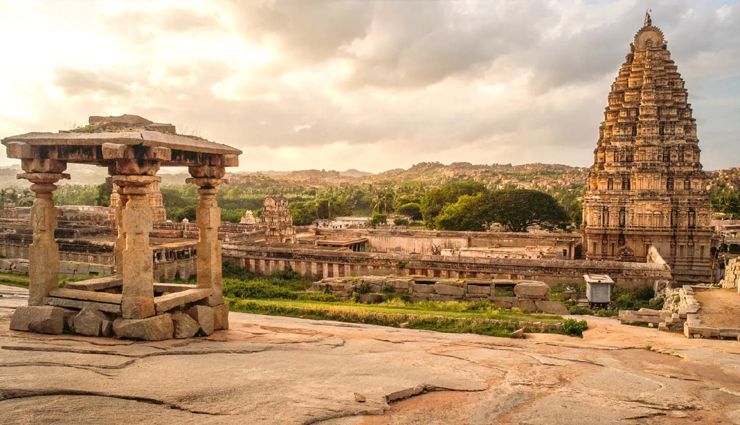
Are you aware of the most captivating destinations to explore in Hampi that showcase the grandeur of India's final Hindu dynasty, the Vijayanagara Empire? From the 14th to the 16th century, unparalleled craftsmanship was dedicated to every facet of Hampi's magnificent architecture. This is precisely why Hampi, situated in Karnataka, secured the second spot on the New York Times' list of must-visit destinations for 2019. If you're seeking additional reasons to explore the prominent landmarks in Hampi, read on!
To begin with, Hampi is renowned as the temple town of Karnataka and was once the epicenter of the Vijayanagara Empire. Secondly, it was the same empire that employed gold and silver currencies during the spice and cotton trade. Thirdly, Western traders and merchants used to converge on Hampi for commerce.
Today, Hampi stands as a UNESCO World Heritage Site, with the Hampi group of monuments encompassing Dravidian temples, monolithic structures, and remnants of ancient edifices. Furthermore, the attractions for tourists in Hampi extend far beyond the historical ruins.
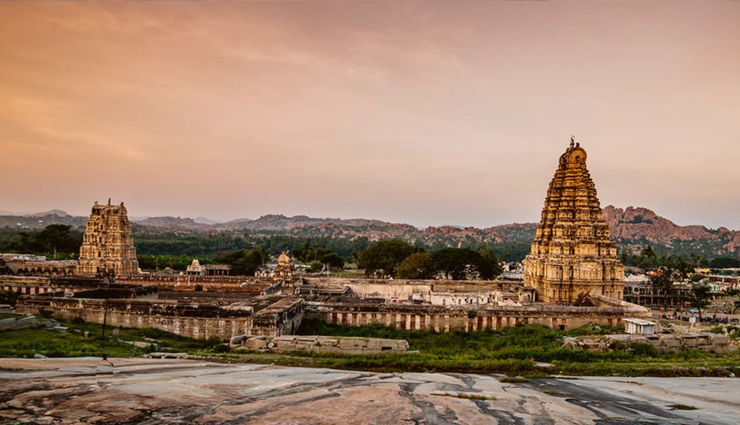
# Sree Virupaksha Temple
The Sree Virupaksha Temple in Hampi is one of the most revered and iconic temples in the region. The Sree Virupaksha Temple is a Hindu temple dedicated to Lord Shiva, known as Lord Virupaksha in this context. It holds immense spiritual significance and is considered one of the holiest sites in Hampi. The temple's history is intertwined with the history of the Vijayanagara Empire, as it is believed to have been originally constructed in the 7th century and later expanded during the reign of the Vijayanagara rulers. This makes it one of the oldest functioning temples in India.
The temple is located at the foothills of Hemakuta Hill, which is itself dotted with numerous temples and shrines. Visitors often climb this hill to get a panoramic view of the temple complex and the surrounding landscape. The temple continues to be an active place of worship, with daily rituals and ceremonies performed by the temple priests. It also hosts various festivals throughout the year, including the annual Virupaksha Car Festival, which attracts a large number of devotees and tourists.
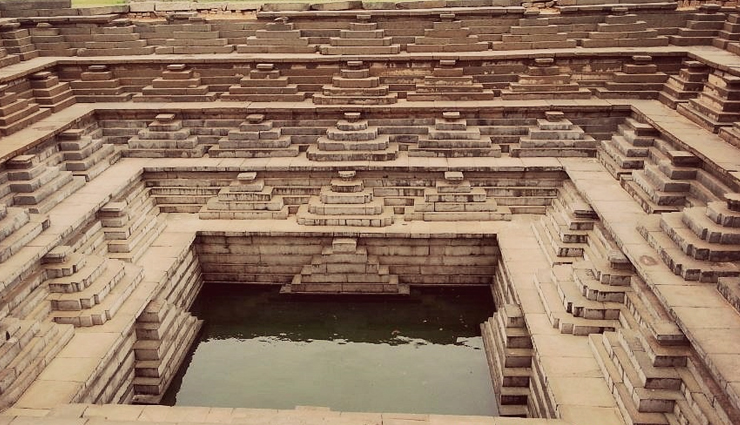
# Queen’s Bath
The Queen's Bath in Hampi is a unique and historical structure that offers insights into the architectural and cultural heritage of the Vijayanagara Empire. The Queen's Bath is believed to have been built during the reign of the Vijayanagara Empire, which thrived from the 14th to the 16th century. It was constructed as a royal bathing complex primarily used by the queens and their attendants. This highlights the importance of royal luxury and privacy in the empire.
The Queen's Bath is a rectangular building with a central pool. It is surrounded by a veranda with ornate arched corridors. The central pool was once filled with water, and the queens would have used it for bathing. The architecture of the veranda allowed for natural ventilation and provided a pleasant environment. The architectural elements of the Queen's Bath, such as the arched doorways and the overall layout, are reminiscent of Moorish designs found in Islamic architecture. This reflects the multicultural influences present during the Vijayanagara Empire's rule.
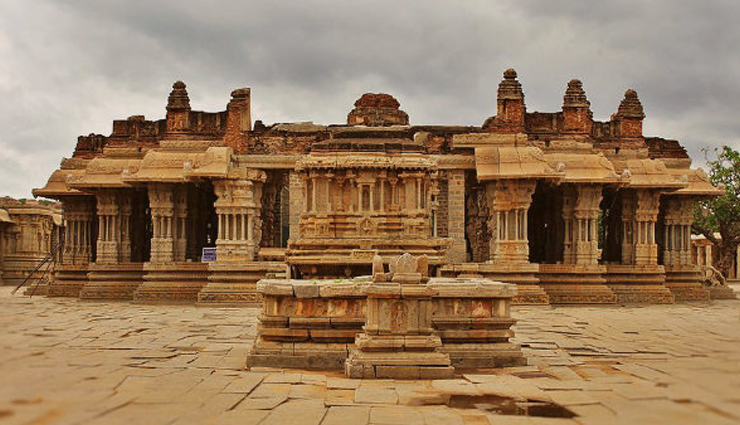
# Vijaya Vitthala Temple
The Vijaya Vitthala Temple, also known as the Vittala Temple, is one of the most iconic and renowned temples in Hampi, Karnataka, India. It is a magnificent architectural masterpiece that reflects the grandeur of the Vijayanagara Empire. The Vijaya Vitthala Temple is dedicated to Lord Vitthala, a form of Lord Krishna, and is a place of worship for devotees of Lord Vitthala.
The temple is a prime example of Vijayanagara architecture, characterized by its intricate and ornate details, elaborately carved pillars, and impressive stone sculptures. The temple's architecture is a testament to the architectural expertise of the Vijayanagara Empire. One of the most famous features of the Vijaya Vitthala Temple is the Raya Gopuram, a towering entrance gateway adorned with impressive sculptures and intricate carvings. It serves as a magnificent introduction to the temple complex.
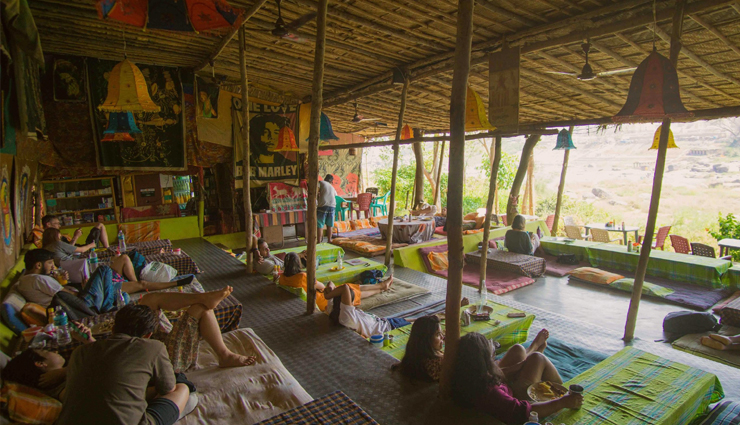
# Hippie Island
Hippie Island, also known as Virupapura Gadde, is a unique and laid-back enclave in Hampi, Karnataka, India. It has gained popularity as a destination for travelers seeking a more relaxed and bohemian atmosphere. Hippie Island is known for its relaxed and bohemian ambiance. It attracts backpackers, hippies, and travelers looking for a break from the hustle and bustle of city life. The atmosphere is peaceful, and it's a great place to unwind and connect with nature.
The Tungabhadra River flows alongside Hippie Island, offering stunning views and a tranquil atmosphere. Many travelers spend their time lounging by the riverbanks, swimming, and enjoying the scenic beauty. Hampi is famous for its unique landscape of giant boulders, and Hippie Island is surrounded by them. These boulders create picturesque backdrops and provide opportunities for bouldering and rock climbing for adventure seekers.
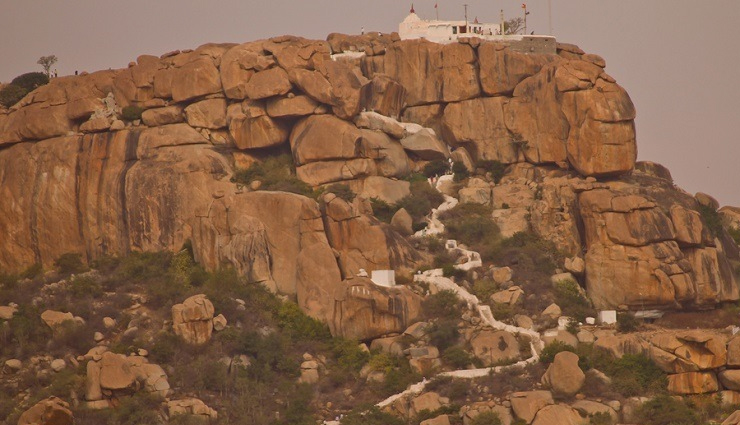
# Matanga Hill
Matanga Hill is a prominent and picturesque hill located in Hampi, Karnataka, India. It is a popular tourist destination and a great vantage point to enjoy panoramic views of the historic ruins and stunning landscape of Hampi. Matanga Hill stands at an elevation of approximately 300 meters (984 feet) above sea level. It is one of the highest points in Hampi, providing breathtaking vistas of the surrounding area.
Matanga Hill holds historical and mythological significance. According to local legends, it is believed to be the spot where Lord Rama met Hanuman during his search for Sita. Additionally, it is mentioned in ancient texts as "Mathanga Parvatha." The primary attraction of Matanga Hill is the stunning panoramic view it offers. Visitors who make the effort to climb to the top are rewarded with sweeping vistas of the Hampi Bazaar, the Tungabhadra River, the Virupaksha Temple, and the sprawling ruins of Hampi. It's especially breathtaking during sunrise and sunset.
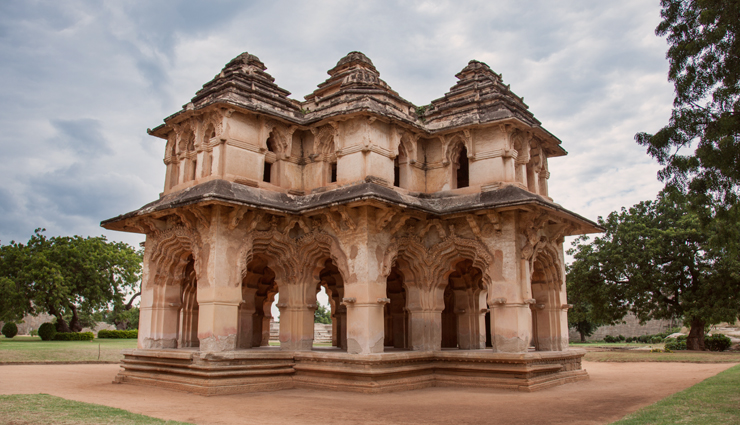
# Lotus Mahal
The Lotus Mahal, also known as Kamal Mahal or Chitrangini Mahal, is a remarkable and well-preserved architectural gem located within the historic ruins of Hampi, Karnataka, India. The Lotus Mahal is a stunning example of Indo-Islamic architecture, characterized by its unique blend of Hindu and Islamic design elements. This style is often referred to as the "Deccan Islamic" or "Mughal" style.
The arches and windows of the Lotus Mahal display a Mughal architectural influence with their pointed, horseshoe-shaped arches. This is a unique feature, as it combines Islamic architectural elements with the overall Dravidian style of Hampi. The central pavilion of the Lotus Mahal is surrounded by a wide veranda with equally exquisite arches. The central hall was used for various purposes, including relaxation, music, and dance performances.





